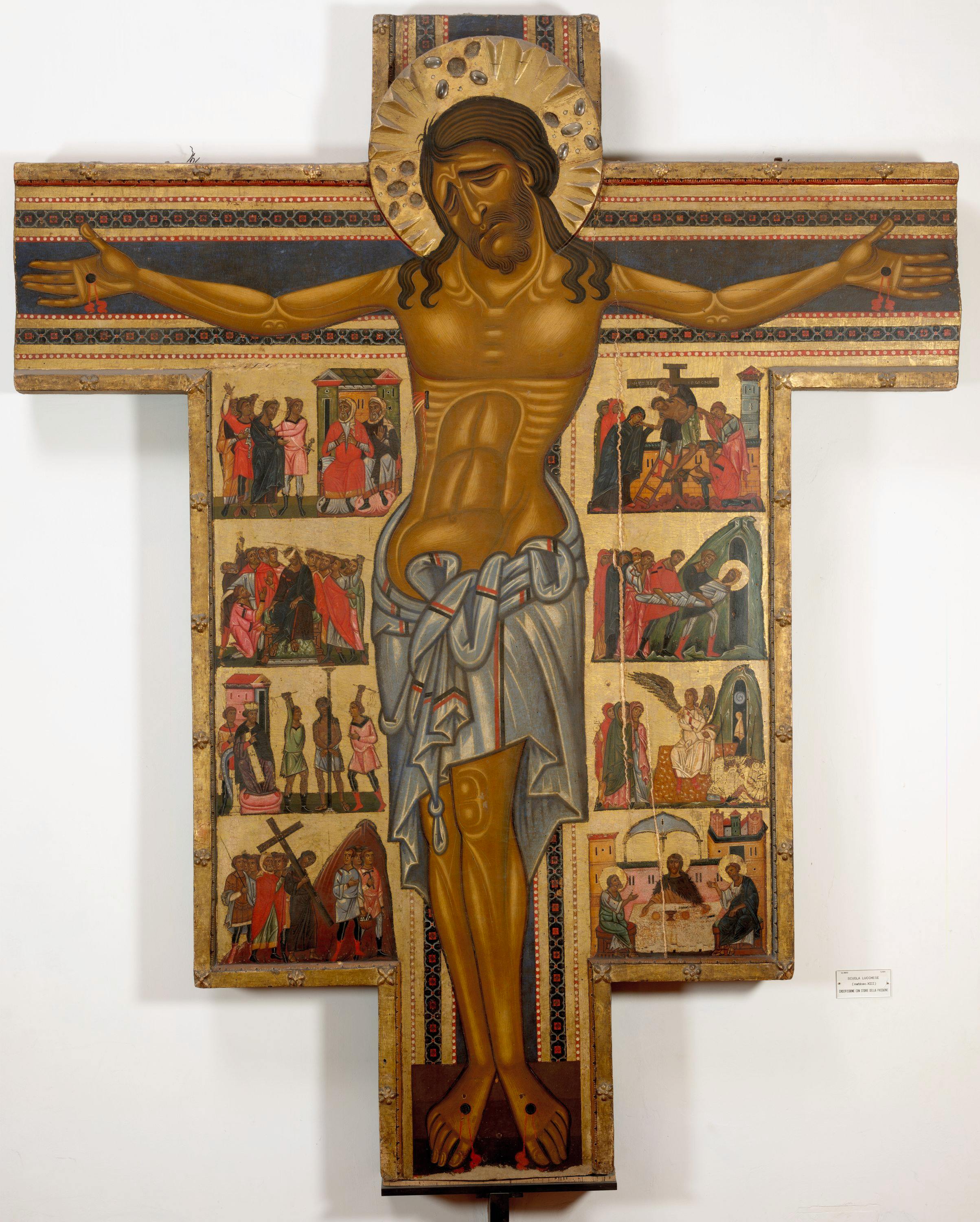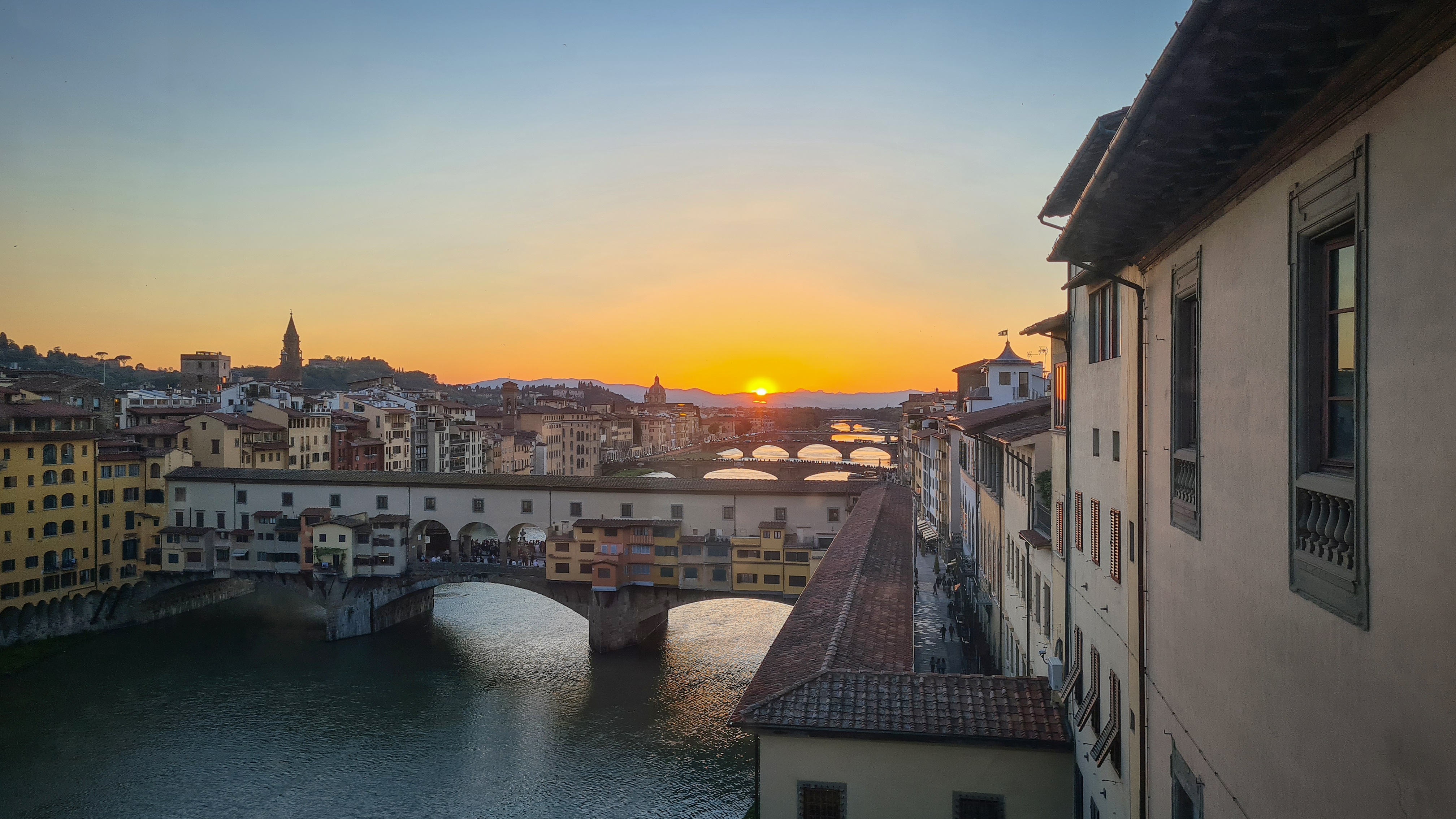Painted cross
Master of the cross 434
Christ, with his eyes closed and head tilted to one side, is depicted suffering in line with the iconography of “Christus patiens”, a model that became widespread in Italy in the 13th century and emphasises the Saviour's humanity, transfigured by pain and death. Blood gushes from wounds on his hands, feet and side.
The figure of Christ is surrounded by seven scenes of Gospel stories. On the left, from the top, Jesus before the Sanhedrin, Christ mocked and crowned with thorns, the flagellation of Christ and Christ's ascent to Calvary are depicted. The Crucifixion at the centre fits into the narrative, which continues on the right-hand panels with Christ's Descent from the cross, the Entombment of his body, the pious women meeting the angel announcing Christ's resurrection, and the Saviour's appearance to the disciples during the supper at Emmaus. Other figures are likely to have been depicted on the panels on the four ends of the cross, which have been lost.
The type of cross, with a historiated panel, is quite common in Tuscan painting between the 12th and 13th centuries. Many of the pieces well known today were created for convent churches, and it is possible that the illustration of the Gospel scenes was to aid meditation and understanding of the Holy Scriptures. The origin of the Uffizi Cross is unknown; it has been in the Gallery's repositories since before 1881.
The painted cross is the work of a painter active in Florence in the second quarter of the 13th century known formally as Master of the Cross 434, derived from the painting's inventory number. A skilled storyteller, the master employs strong contrasts between light and shadow to imply the plasticity of the bodies, set out in line with conventional Byzantine master templates. One of the most prominent personalities active on the Florentine scene in the first half of the century, according to some scholars the Master of the Cross 434 could be identified as the Master of the Madonna of Santa Maria Primerana in Fiesole, which would represent his earliest activity, or as the young Coppo di Marcovaldo.
Stigmata of St Francis
Master of Cross no. 434 of the Uffizi (Lucca and Florence, second quarter of the 13th century)

